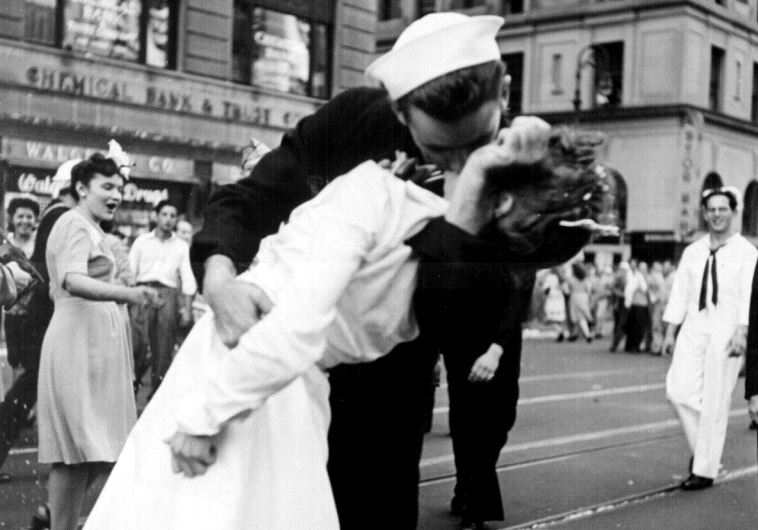Jewish refugee from iconic World War II photo dies at 92
The photo was taken on August 14, 1945 after the news of Japan’s surrender and the end of World War II was broadcast.
 The iconic Times Square kiss in New York on the day World War II ended(photo credit: Wikimedia Commons)
The iconic Times Square kiss in New York on the day World War II ended(photo credit: Wikimedia Commons)